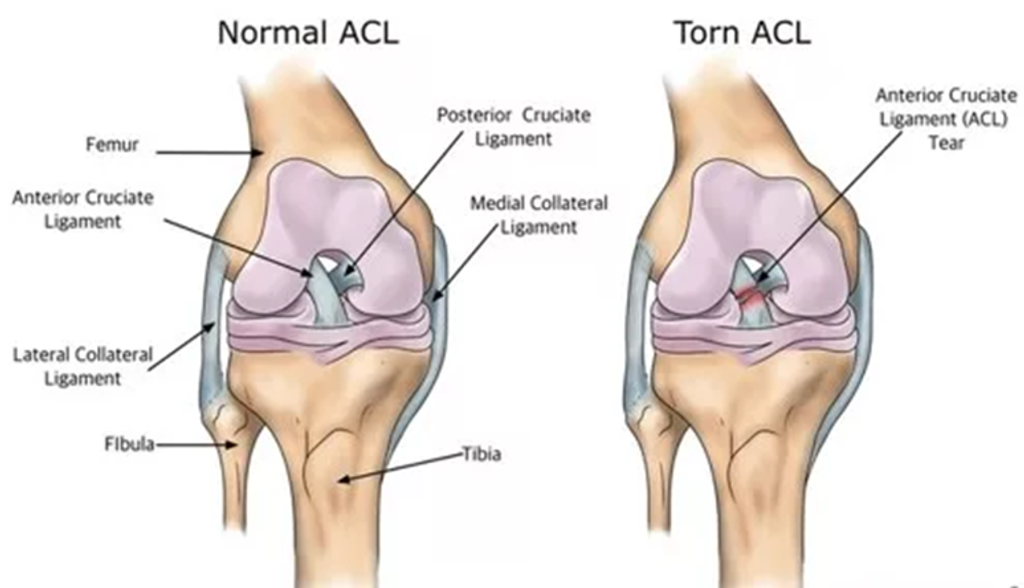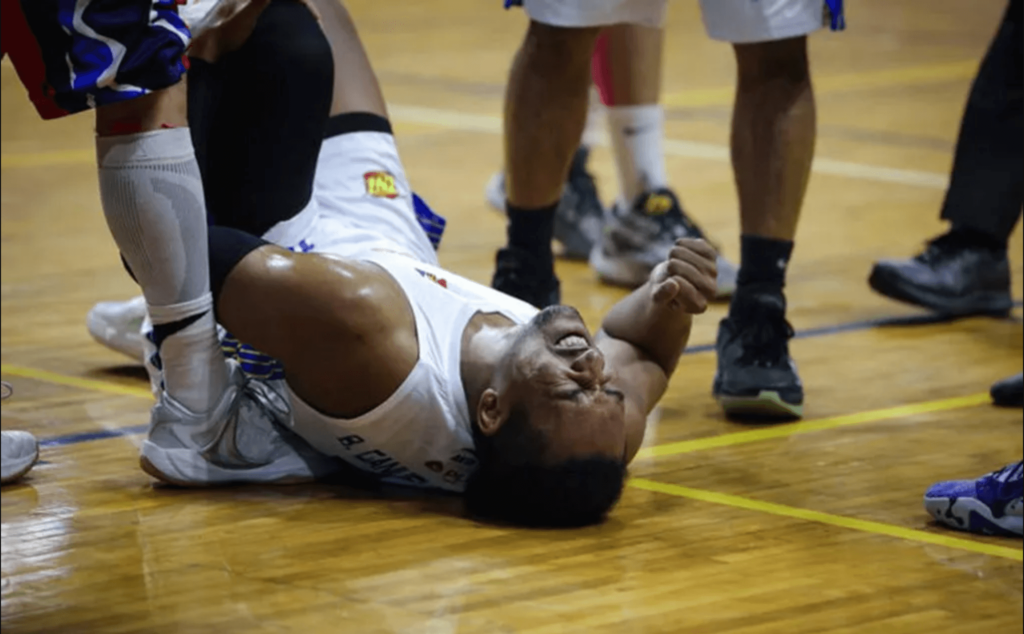Manila, Philippines—The formidable player of TNT-Tropang Giga, Bradon Ganuelas Rosser, confirmed sustaining an anterior cruciate ligament (ACL) injury during an early collision in TNT’s Game ‘Two loss to Rain or Shine’ in the PBA Philippine Cup quarterfinals on Sunday night, May 12.
Exiting the game with just 3:54 remaining on the clock, Rosser’s departure followed a collision with Rain or Shine guard Andre Caracut during a fast break play. Despite the setback, Rosser was assisted back to the bench after spending a few tense moments on the court.
With the news of Rosser’s injury, the anticipation for the highly awaited Game 3 clash between Tropang Giga and Elasto Painters has taken a different turn. It’s now certain that Rosser, a player whose absence will be keenly felt, will miss the game scheduled for tomorrow, May 15 (Wednesday), at the Ninoy Aquino Stadium.
According to the report disclosed by TNT manager Jojo Lastimosa, an MRI of Rosser’s knee revealed a substantial high-grade ACL injury and lateral meniscus tear.
Types of ACL Injuries
ACL injuries are classified into three grades based on severity:
- Grade 1 (Mild): The ligament is stretched but not torn.
- Grade 2 (Moderate): A partial tear of the ACL.
- Grade 3 (Severe): A complete tear of the ACL.

Symptoms of ACL Injuries
The symptoms of ACL injuries can vary depending on the severity but typically include:
- Immediate Pain and Swelling: Often occurring within 24 hours of the injury.
- Loss of Range of Motion: Difficulty in bending and straightening the knee.
- Instability: The knee may feel like it’s “giving out” when weight is put on it.
- Tenderness: Around the knee joint.
Diagnosis of Rosser’s ACL Injury
Diagnosing an ACL injury involves a combination of physical examinations and imaging tests:
- Physical Examination: Tests such as the Lachman, pivot shift, and anterior drawer tests help assess the ligament’s stability.
- MRI (Magnetic Resonance Imaging): Provides a detailed image of the ACL and other knee structures to confirm the extent of the injury.
- X-rays: Used to rule out bone fractures that may have occurred along with the ligament injury.
Treatment for Bradon Ganuelas Rosser’s Injury
According to an orthopedic surgeon, treating Rosser’s high-grade ACL injury and lateral meniscus tear involves several steps:
Initial Management
- RICE Protocol: Rest, Ice, Compression, and Elevation to reduce swelling and pain.
- Bracing: To stabilize the knee and prevent further injury.
Surgical Intervention
- ACL Reconstruction Surgery: The torn ligament is replaced with a tissue graft from another part of the leg or a donor. This procedure is essential for athletes who wish to return to high-level sports.
- Meniscus Repair or Removal: Depending on the severity of the tear, the meniscus may be repaired or partially/fully removed.
Rehabilitation
- Physical Therapy: Focused on restoring range of motion, strength, and stability. This includes exercises to strengthen the quadriceps and hamstrings.
- Gradual Return to Activity: Starting with low-impact activities and progressing to sports-specific drills under the guidance of a physical therapist.
Long-Term Recovery
- Follow-Up Care: Regular check-ups with the orthopedic surgeon to monitor healing.
- Preventive Measures: Incorporating exercises to prevent future injuries, such as neuromuscular training and agility drills.
Given the nature of Rosser’s injuries, his treatment plan will likely be comprehensive, involving both surgical and extensive rehabilitation phases to ensure a successful return to the court. His absence will undoubtedly be felt in the upcoming Game 3 clash between Tropang Giga and Elasto Painters at the Ninoy Aquino Stadium.
References
- TNT BIGMAN BRANDON ROSSER SUFFERS ACL, OUT FOR PLAYOFFS [Internet]. Accessed on May 30, 2024. Available at: https://eurotvph.com/tnt-bigman-brandon-rosser-sufffers-acl-out-for-playoffs/
- ACL Tear [Cleveland Clinic]. Accessed on May 30, 2024. Available at: https://my.clevelandclinic.org/health/diseases/16576-acl-tear
About Docquity
If you need more confidence and insights to boost careers in healthcare, expanding the network to other healthcare professionals to practice peer-to-peer learning might be the answer. One way to do it is by joining a social platform for healthcare professionals, such as Docquity.
Docquity is an AI-based state-of-the-art private & secure continual learning network of verified doctors, bringing you real-time knowledge from thousands of doctors worldwide. Today, Docquity has over 400,000 doctors spread across six countries in Asia. Meet experts and trusted peers across Asia where you can safely discuss clinical cases, get up-to-date insights from webinars and research journals, and earn CME/CPD credits through certified courses from Docquity Academy. All with the ease of a mobile app available on Android & iOS platforms!






